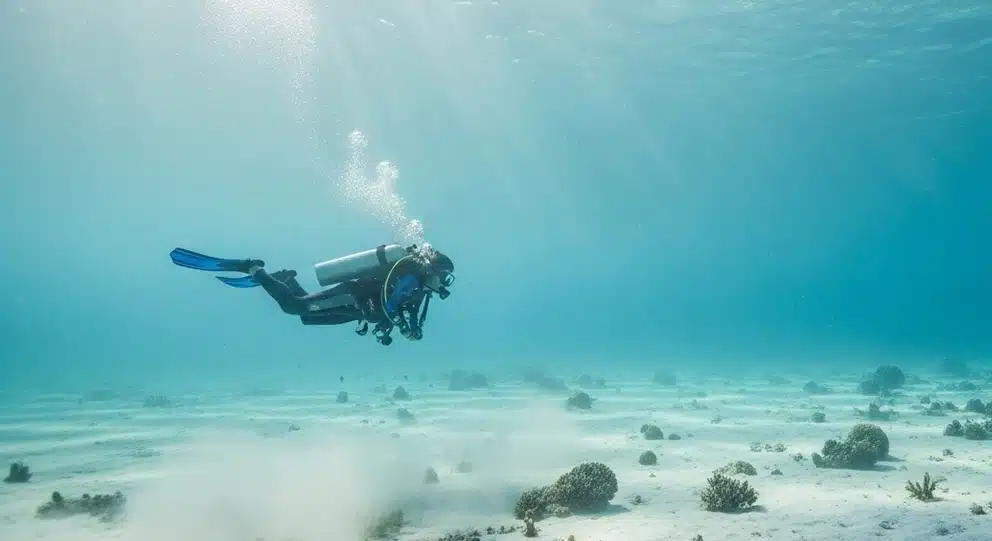Blog
How to Choose Your First Mini Scuba Diving Tank as a Beginner
The underwater world is a mysterious and fascinating realm. Many people dream of experiencing the magic of breathing beneath the surface, but the complexity and high cost of traditional scuba gear often discourage beginners. In recent years, mini scuba diving tanks have emerged as a lightweight and portable alternative, opening the “first door” to the ocean for many newcomers.
But as a first-time buyer, how do you choose your first small scuba tank? This guide will walk you through the basics, advantages, limitations, and key standards to consider when selecting your first mini scuba diving tank.
What Is a Mini Scuba Diving Tank?
A mini scuba diving tank typically refers to a compact, high-pressure cylinder with a capacity ranging from 0.5L to 2L, paired with a regulator that enables direct underwater breathing. It is not a replacement for a traditional scuba cylinder but is designed for:
- Short-term diving experiences– Perfect for snorkeling enthusiasts and beginners who want to try underwater breathing.
- Backup air supply– Some divers carry a mini tank as an additional safety source.
- Underwater tasks – Such as boat maintenance, shallow inspections, or underwater photography.
In short, a mini scuba tank is more of an entry-level exploration tool rather than the primary air source for deep diving.
Advantages and Limitations of Mini Scuba Tanks
Advantages
- Lightweight and portable– Easy to pack and
- Low entry barrier– Let beginners try underwater breathing without full gear.
- Affordable– Lower cost compared to traditional scuba gear.
- Versatile use– Snorkeling, pool training, underwater photography, and short tasks.
Limitations
- Limited air time– Usually 5–20 minutes.
- Depth restrictions– Best used within 10 meters.
- Requires proper use– Safe filling, breathing control, and maintenance are essential.
Five Key Standards for Choosing Your First Mini Scuba Tank
1) Safety Certifications and Material Quality
Always prioritize safety.
- Certifications: CE, DOT, ISO — your guarantee of reliability.
- Materials: Aluminum alloy and carbon fiber are strong yet lightweight.
Pro Tip: Only buy tanks with batch numbers and inspection marks.
2) Capacity and Usage Scenarios
The capacity determines your airtime:
- 5L–0.7L– Portable, ideal for snorkeling or pools (5–10 minutes).
- 1L– Balanced choice, about 10–15 minutes, best for beginners.
- 2L– Longer use (15–20 minutes), suitable for short explorations.
Recommendation: Start with 1L — the best balance of portability and performance.
3) Refilling Options
How to refill your tank:
- Manual pump– Low cost, but time-consuming.
- Electric compressor– Quick and efficient, great for frequent divers.
- Large scuba cylinder adapter – Fast refill at dive shops.
Choose tanks that support multiple refill methods for flexibility.
4) Comfort and Wearing Design
- Mouth-held– Simple but requires hand support.
- Backpack/strap system – Hands-free, better for longer dives or photography.
- Weight– Larger tanks last longer but may be heavy for beginners.
5) Accessories and Maintenance
A beginner-friendly set should include:
- Pressure gauge– Monitor remaining air.
- Harness/strap– Easier carrying.
- Refill adapters– For different filling methods.
Don’t forget regular maintenance to keep your tank safe and functional.
Beginner FAQs About Mini Scuba Diving Tanks
Q1: How deep can a mini scuba tank go?
Stay within 10 meters for safety and efficiency.
Q2: How long does it last underwater?
Depending on tank size and breathing, 5–20 minutes. Beginners often consume air faster.
Q3: Can I use it alone as a beginner?
Not recommended. Always follow the Buddy System.
Q4: What precautions should I take?
- Avoid overfilling.
- Control breathing to conserve air.
- Rinse and store properly after use.
Learn more:
- Why More and More Diving Enthusiasts Are Choosing Mini Scuba Tanks
- 10 Scuba Diving Mistakes Beginners Make
- Do you know what the amazing benefits of scuba diving?
Conclusion
A mini scuba diving tank is the perfect entry point for beginners to explore the underwater world. It offers portability, affordability, and accessibility, but comes with clear air and depth limitations.
When buying your first small scuba tank, focus on:
- Safety certifications
- Capacity matched to your needs
- Flexible refilling options
- Comfortable wearing design
- Proper accessories and maintenance
The right mini scuba tank can make your underwater adventure safe, enjoyable, and unforgettable.
Tip: A Good Entry-Level Choice
If you’re buying your first mini scuba tank, choose a reliable brand. For example, SMACO offers models with CE and ISO certifications in sizes from 0.5L to 2L, perfect for snorkeling, pool training, and short underwater explorations.
For beginners, the SMACO S400 (1L capacity) is an excellent starting point — lightweight, balanced, and safe for a comfortable first dive.
